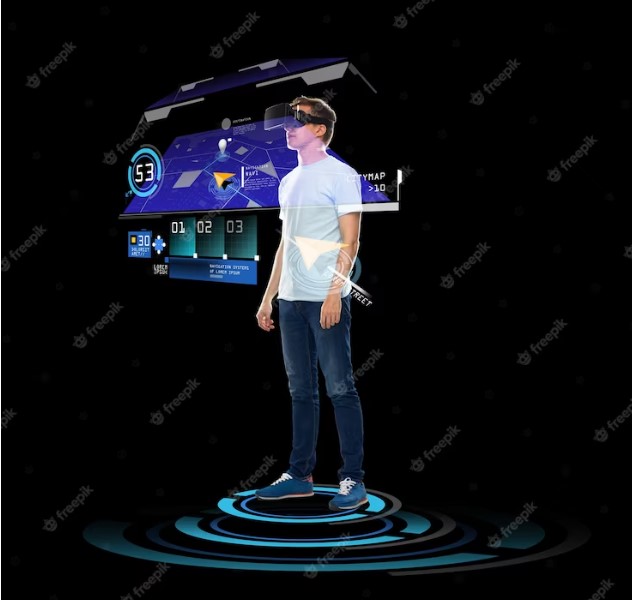Technology is constantly evolving, and the trends that we see today are shaping the future of our world. In this article, we will look at the top 10 technology trends that you should be watching in future.
Introduction
Technology is constantly evolving, and the trends that we see today are shaping the future of our world. These trends are not just pie-in-the-sky ideas. They are already being developed and implemented by companies and organizations around the world. And as they continue to mature, they have the potential to revolutionize the way we live, work, and play.
Top 10 List
Without further ado, here are 10 technology trends that you should be watching in the future:
1. Artificial Intelligence (AI)
Artificial Intelligence is one of the most disruptive technologies of our time, and it is only going to become more powerful in the years to come. AI is already being used in a wide variety of industries, from healthcare to customer service. In future, we can expect to see even more innovative applications of AI, such as self-driving cars and virtual assistants that can understand our natural language.
2. Robotic Process Automation (RPA)
RPA constitutes a transformative innovation for enterprises across all scales, automating repetitive manual tasks currently tackled by human workers. This empowers employees to dedicate time towards more strategic initiatives. RPA also enhances accuracy and efficiency, enabling major cost savings.
RPA adoption will likely accelerate across additional industries like finance and manufacturing. For instance, deploying RPA could help optimize processes including insurance claims processing, stock trading, and product assembly. This would liberate employees to concentrate on intricate cognitive tasks and simultaneously improve the precision and efficiency of these workflows. RPA’s automation capabilities promise to reshape business operations and unlock new realms of productivity.
3. 3D Printing
3D printing constitutes an exponentially expanding technology harbouring immense potential to fundamentally disrupt manufacturing. 3D printers can fabricate objects directly from digital files, eliminating requirements for molds and tooling. This bestows pronounced cost reduction and heightened flexibility.
Projections indicate prolific 3D printing adoption to create diverse products, spanning from prototypes to customized medical devices. 3D printing’s transformative capabilities presage the dawn of a new era in manufacturing processes and business models.
4. Blockchain
Blockchain represents an inherently secure and transparent mechanism for storing data. Although serving as the fundamental infrastructure for cryptocurrencies such as Bitcoin, blockchain harbours immense potential across myriad other use cases.
Projections point to increased blockchain adoption for supply chain provenance, digital identity management, and smart contract enablement. Blockchain’s innate attributes of trust, accountability, and accuracy promise to unlock new realms of value.
5. Internet of Things (IoT)
The Internet of Things constitutes the expansive network of physical devices embedded with connectivity to transmit data over the internet. By aggregating and analysing real-time data streams, IoT can heighten operational efficiency, safety, and convenience across diverse environments.
Projections indicate accelerating proliferation of IoT devices across homes, enterprises, and urban infrastructure. From autonomous vehicles to smart energy grids, IoT adoption promises to transform multiple facets of life through enhanced connectivity and intelligence.
6. Super Apps
Super apps are single apps that offer a variety of services. They are becoming increasingly popular in Asia, and they are starting to gain traction in other parts of the world. In future, we can expect to see even more super apps being developed, as they offer a convenient way to access multiple services from a single platform.
7. 5G
5G is the next generation of cellular network technology. It offers much faster speeds and lower latency than 4G, which will enable new and innovative applications. In future, we can expect to see 5G being used for things like self-driving cars, virtual reality, and augmented reality.
8. Quantum computing
Constitutes a revolutionary technological paradigm grounded in the principles of quantum mechanics, enabling intricate computational operations. These quantum systems showcase exponentially superior processing capabilities in comparison to their classical counterparts.
This extraordinary potency empowers the resolution of intricate conundrums hitherto insurmountable for conventional computing methodologies. The potential applications of quantum computing encompass domains like cryptography, pharmaceutical exploration, and the simulation of intricate systems.
9. Virtual Reality (VR) and Augmented Reality (AR)
VR and AR have surfaced as burgeoning technological domains that are gaining remarkable traction. VR transports users into artificial realms, while AR superimposes digital components onto authentic environments. These transformative innovations hold immense potential for reshaping interactions between humans and technology across diverse sectors.
VR is poised to redefine realms such as gaming, education, and immersive training, while AR could disrupt domains like navigation, retail experiences, and entertainment.
10. Big Data
Big data refers to vast and complex datasets generated from various sources, encompassing structured and unstructured information, that necessitate advanced tools and techniques for efficient processing, analysis, and extraction of meaningful insights. Its application spans industries, enabling informed decision-making, enhanced efficiency, and strategic innovations.
Conclusion
The technological trends outlined in this article offer just a glimpse of the multifaceted innovations shaping the upcoming landscape. As technological advancement continues its inexorable stride, an array of novel and revolutionary applications is poised to surface across various domains.
Staying well-informed about these progressive developments is essential to effectively anticipate the transformative impact they will engender. The winds of change are already discernible on the horizon, and attuned awareness of unfolding trends empowers organizations to navigate technological transitions with foresight and resilience. In the realm of unceasing change, possessing knowledge translates into wielding power.









